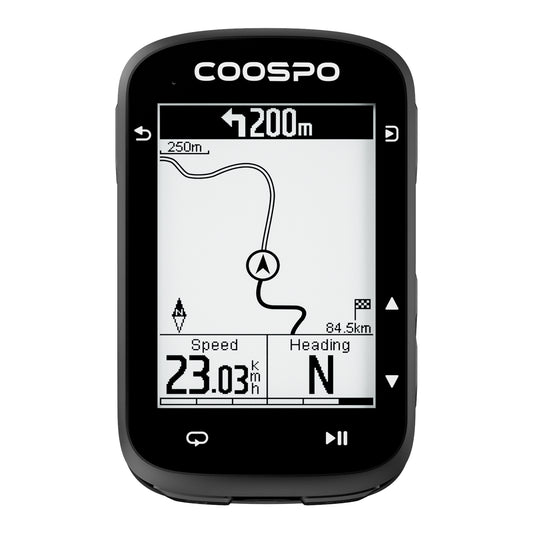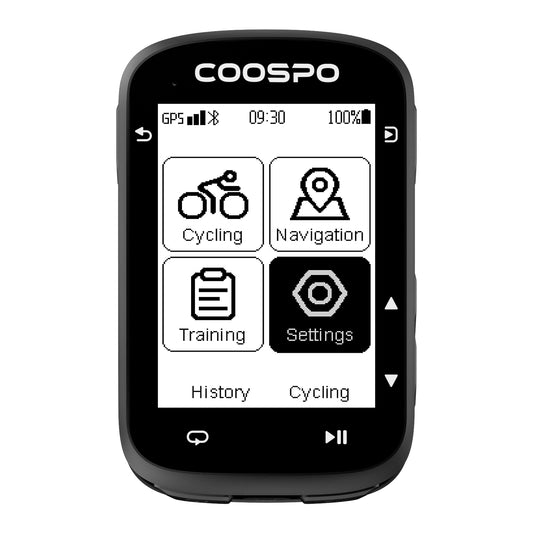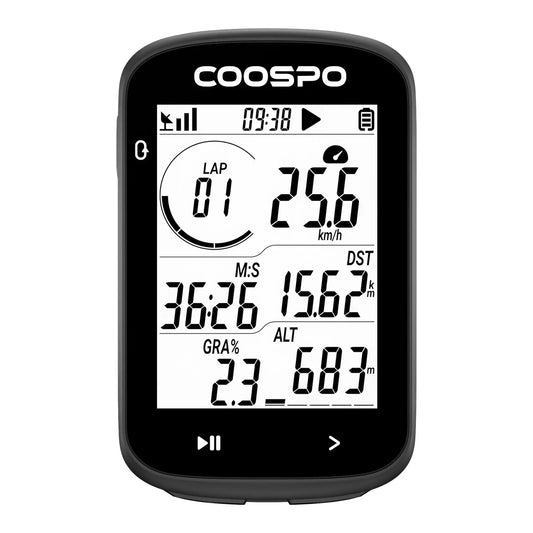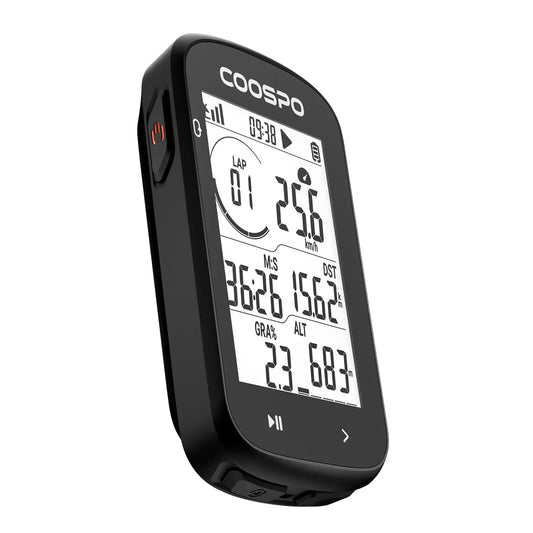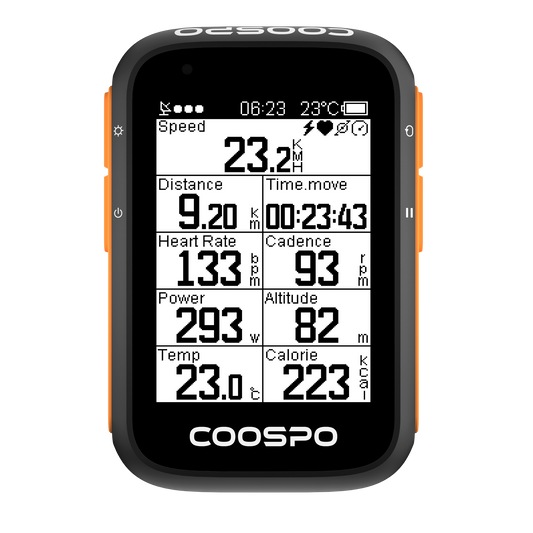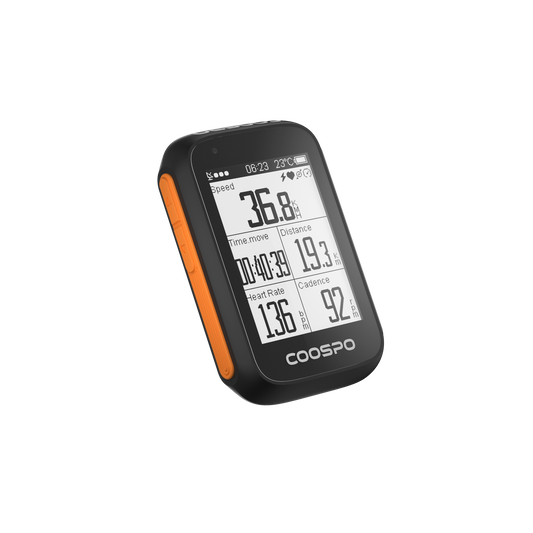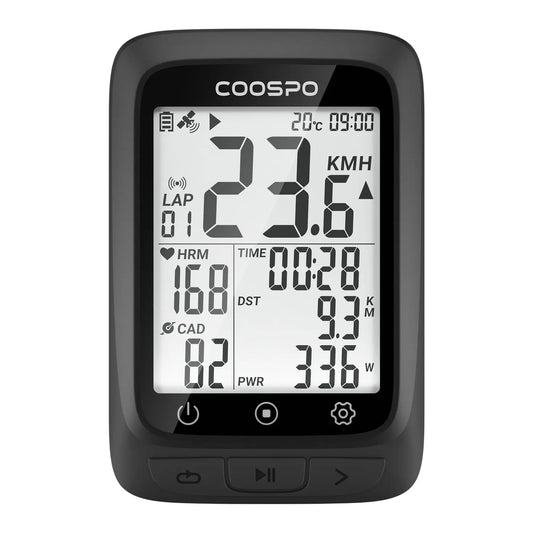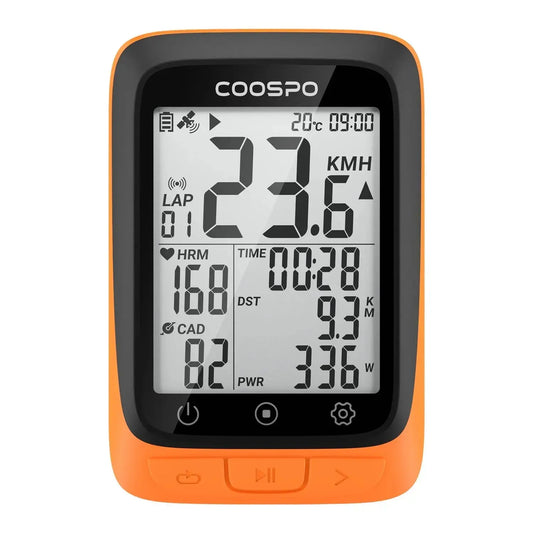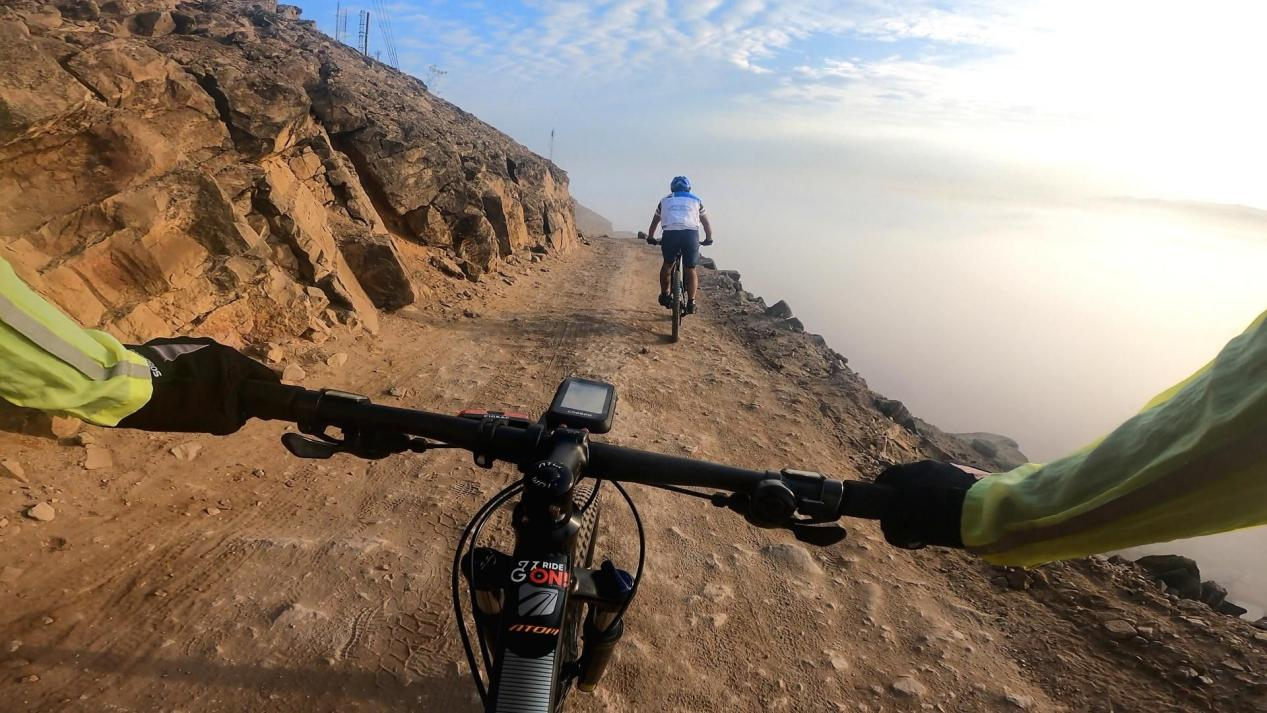Riding in the Rain: Essential Tips
Riding in the Rain: Essential Tips
Wet roads, cloudy skies, and cold raindrops can make it difficult to ride your bike. However, once you brave the weather, Riding in the rain can be a fun way to get around, do errands, or have a weekend adventure.
Riding in the rain can be intimidating, but with the right gear and attitude, it can actually be enjoyable. Whether you're biking to work or just going for a ride, here are some tips to help you stay dry and comfortable during your rainy adventure. Remember, there's no such thing as bad weather, only inappropriate clothing!
Dress for Warmth and Breathability
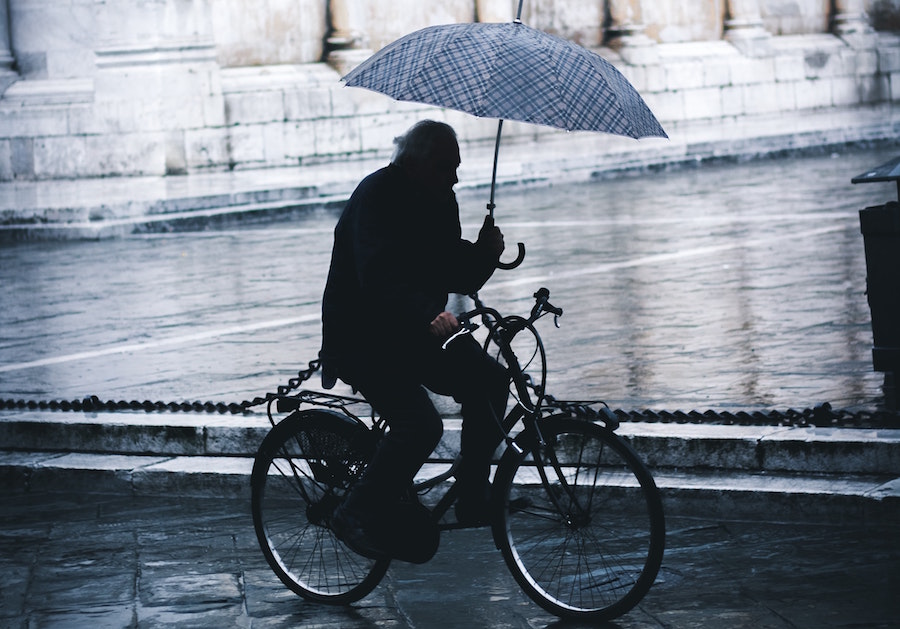
To fully enjoy outdoor activities, it's important to dress in layers. Try out different combinations of clothing to find what works best for you. Consider how long you'll be outside and choose to clothe that provides enough ventilation. For longer rides in the rain, wear a base layer, waterproof jacket, breathable tights, and waterproof pants.
To stay warm in cold weather while biking, try wearing a headband under your helmet to block out the cold air. For short rides of around 15 minutes or fewer, you may not need as much ventilation, so a thicker sweater or base layer under your rain jacket can keep you warm. Look for jackets with pit zips to help regulate your body temperature by allowing more airflow without taking off your jacket.
- Bike gloves:
While cycling, it's common for fingers to get cold quickly, especially when there's a breeze. To stay comfortable and in control, it's important to keep your hands warm and dry. One suggestion is to wear warm, waterproof gloves that provide insulation without sacrificing dexterity. Gloves made for skiing or kayaking work well in rainy conditions. Look for gloves with a breathable membrane to prevent sweating inside the glove.
- Cycling shoes:
Famous cyclist and writer, John Smith, stresses the need for waterproof shoes, saying, Keeping your feet dry is key for a comfortable biking experience, especially in the rain.
To avoid a bad biking experience from wet feet, it's smart to get waterproof cycling shoes. Look for ones with sealed seams and a waterproof membrane to keep moisture out. Also, make sure they have good ventilation to prevent sweat buildup and keep you comfortable on long rides.
As most cycling shoes are crafted for a close fit, it may be advisable to opt for a half size larger in order to accommodate cozy wool socks. The choice between clipless or flat pedal preferences is subjective, though having a reliable grip on the shoe soles for dismounting in busy traffic can be advantageous. To shield your feet from the elements and maintain warmth, consider adding wind- and waterproof cycling shoe covers over your footwear.
Pack Dry Clothes for Your Destination
No matter how well-prepared you are, there's always a chance of getting wet while biking in the rain. If you’re commuting to work, it’s essential to arrive at your destination with clean, dry clothes. To ensure you stay comfortable after your ride, pack a set of dry clothes for your destination. This includes a change of clothes, socks, and shoes, as well as a towel to dry off excess moisture.
If you don't have a place at work to keep extra clothes, it's a good idea to use waterproof bags to carry them. Make sure the bags are truly waterproof because rain can seep in. It's always handy to have a spare pair of socks or flip-flops on hand for running errands or riding around town.
Get Your Bike Ready for Rain
Riding in cold and rainy weather can be tough on your bike. Make sure to keep it clean and well-maintained to avoid potential issues.
- Fenders
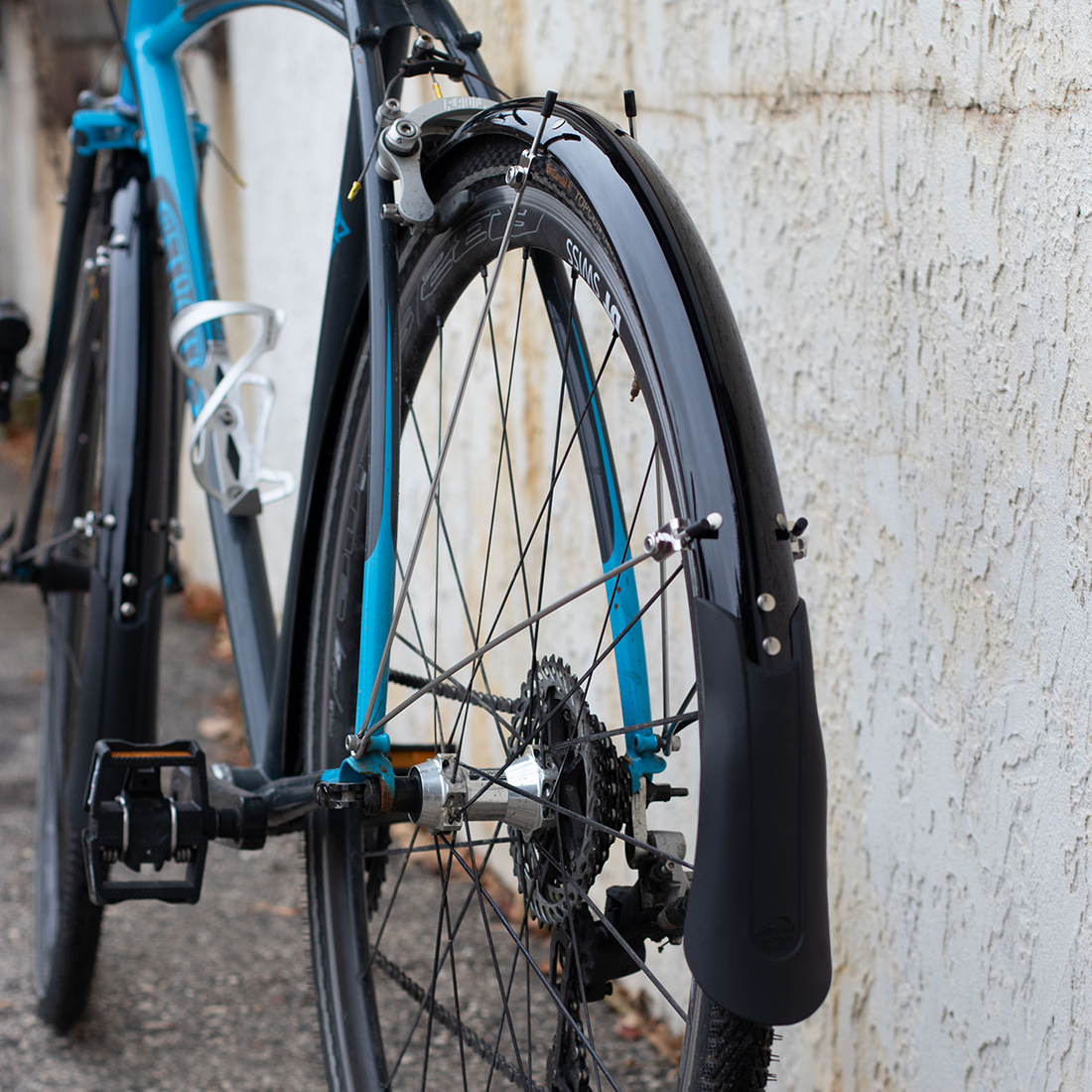
When riding in the rain, fenders are essential for keeping you dry and clean. They block water and mud from splashing up onto you and your bike. Full-length fenders on the front and rear wheels provide the best protection and can also help your bike last longer.
- Chain lube
When it's rainy, rain can wash away the oil on your bike's chain, causing more friction and wearing it out faster. Before you ride in the rain, put some wet lube on your chain to keep it smooth. After riding in the rain, wash off the dirt and grime, wipe down the chain, and put on more lube.
It's best to store your bike in a sheltered location like a garage. If you don't have one, cover the seat with a plastic bag to keep it dry.
- Tires

Make sure to check your tire pressure regularly to ensure it meets the recommended level for driving in wet conditions. Consider switching to wider tires with a specialized tread design that provides better performance on wet roads, giving you more traction and stability.
Choose tires that are softer and have deeper grooves for better traction in the rain. Lowering tire pressure a bit can also help increase grip on wet roads by increasing the amount of tire in contact with the road.
- Bike lights
Improving visibility is important when riding a bike in bad weather or low light conditions. Make sure to attach bright, waterproof lights to the front and back of your bike so that others can see you on the road. Keep your bags from blocking these lights. Choose lights with different brightness settings and a wide beam for better visibility.

While not necessary for biking in the rain, a bike computer can provide useful information like speed, distance, and directions to help you stay on track and monitor your ride. It's best to pick a model that is waterproof or water-resistant to ensure it works properly in bad weather.
To have a better outdoor experience, it's a good idea to do some preparation in advance. Check the weather forecast before you go out and plan a route that includes alternative options in case the weather becomes bad. This way, if it starts pouring rain and you're far from home, you'll know where you can find shelter or catch a light rail or bus.



